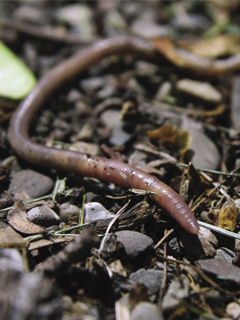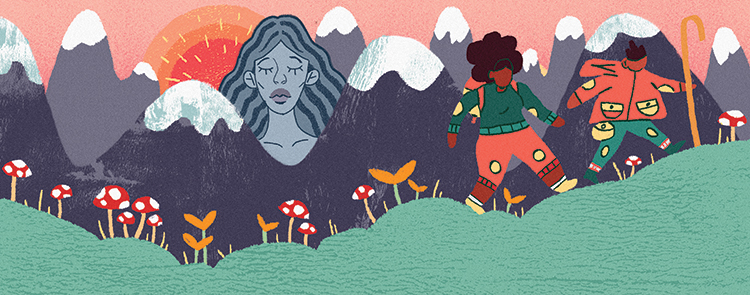 story by Bernard Brown | photo by Mike WatsonWorms are our friends, right? We uncover these wriggly little annelids in the garden and we apologize—sorry to disturb you! Please, get back to work aerating our soil, cycling nutrients and depositing rich castings (poop) to fertilize our tomatoes. Maybe we’ve also seen worms after kicking aside leaf litter while we’re out hiking say, in the Wissahickon Valley, and we assume they must be helping trees just like they help our veggies.
story by Bernard Brown | photo by Mike WatsonWorms are our friends, right? We uncover these wriggly little annelids in the garden and we apologize—sorry to disturb you! Please, get back to work aerating our soil, cycling nutrients and depositing rich castings (poop) to fertilize our tomatoes. Maybe we’ve also seen worms after kicking aside leaf litter while we’re out hiking say, in the Wissahickon Valley, and we assume they must be helping trees just like they help our veggies.
We’re wrong.
“We’ve been taught earthworms are great, but not in our forests,” says Joanne Donohue, land restoration manager at the Schuylkill Center for Environmental Education. This may come as a shock to you (it did to me), but the earthworms we encounter in our woods are a destructive exotic invasive.
In a garden, we view soil as a thick layer of individual particles—tiny bits of weathered rock and decaying organic matter. We like it dark, rich and loose for our flowers and veggies to plunge their hungry roots into and suck up water and nutrients. Worms can play an important role in this sort of soil, keeping it from compacting and shedding castings that our plants can use.
In forests, however, soil is much more than mineral bits and compost. The stuff under the dead leaves and underbrush is a nearly-solid mass, and much of what binds it together is fungus. We tend to think of mushrooms when we think of fungi, but mushrooms, however tasty or beautiful, are just the fruiting bodies of much larger organisms. Forest soil fungi are networks (the record holder measured 2,200 acres and possibly 600 tons) of hyphae, thin filaments that—in a healthy Delaware Valley forest—do most of the work of turning dead plant matter into nutrients that living plants can use.
But that’s not the only way fungi support the forest. Certain fungi form symbiotic relationships with plants. Their hyphae grow into the roots, hooking the plants into the broader network and helping them pull in water and nutrients.
At least this is how it worked before we brought the worms. The nightcrawlers in our woods are an Asian species that, like so many other destructive transplants, found a habitat empty of enemies and full of opportunity. They gobble up protective leaf litter and rip through our native fungi. “You can go out without a shovel and pick up a handful of soil,” says Donohue. “You shouldn’t be able to do that.”
Rain easily washes this loose soil away, stripping our forest hillsides and clogging our streams. Other effects are more subtle and pernicious. The worms shift the balance of decay from fungi to bacteria, making forest soil more acidic. Our woodland plants have evolved to thrive in our fungi-dominated soil, meaning that as the worms advance, some wildflowers retreat, and trees can have a harder time getting established. Even animals may be directly affected—in the Midwest, invasive worms have even been linked to the decline of birds that nest in deep leaf litter.
So, what can we do about the worms? The Schuylkill Center has tested anti-worm measures in experimental plots, including scattering sulfur pellets and layering oak leaf litter. These were somewhat successful, but the worms moved back in once the experiments ended. Until we figure out how to get rid of worms, all we can do is limit their spread. If you go fishing with nightcrawlers, take them back home with you—don’t dump them in the forest when you’re done. And when you’re planting trees and shrubs (particularly near the woods), make sure that worms don’t hitch a ride in the roots.
bernard brown is an amateur field herper, bureaucrat and founder of the PB&J Campaign (pbjcampaign.org), a movement focused on the benefits of eating lower on the food chain. Read about his forays into the natural world at phillyherping.blogspot.com.



